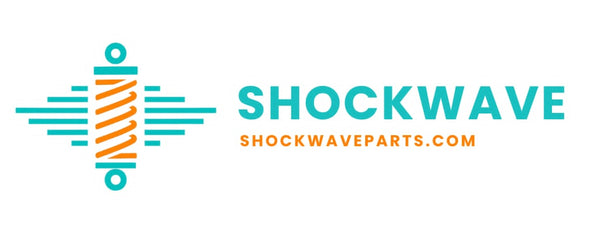How to use custom shaft clamps for inner air cans
Clamping Inner Air Cans (Air Shocks)
After removing the outer air can from an air shock (mostly just held with a circlip accessible from the outside), you’re left with the inner air can, a thin cylinder that the air piston slides inside. On both ends you’ll find a negative seal head and an eyelet, both threaded onto the inner air can. To service them, you’ll need to securely clamp the inner air can.
What Happens If You Ovalize It?
- The air piston will bind or drag, causing sticky behavior.
- You’ll develop air leaks around the seals, not fixable by just replacing seals and your inner air can will wear out.
- Unbending 0.1–0.2 mm deformation is tricky; replacement is often required.
- If you bent it and need help, feel free to contact us.
- Just measure and find the two points around the Outside Diameter of the inner air can where its larger
- Clamp there lightly
- Measure
- Clamp/Measure until it's round again.
- If you bent it and need help, feel free to contact us.
- Some (e.g. Float X2) let you buy a new inner can, but preventing damage is easier.
⚠️ This is one of the easiest parts to ruin. Take the time to do it right.
Strap Wrench?
Strap wrenches apply pressure in a narrow band. If you use one, position it as close to the threaded area as possible to avoid twisting or deforming the can. For Float X2 and similar, use the dedicated shaft clamps provided in the kit, they match the can’s shape and prevent damage.
If there is renforced outside ribs on the inner air can and you really want to use a strap wrench, strap close to the threads and on a rib if possible.
Why Clamping Must Be Done Right
The inner air can is extremely thin and the inside is essentially the air piston’s sliding surface. Any ovalization creates friction zones that degrade performance or cause damage.
⚠️ Always clamp vertically. Never clamp an inner air can horizontally even slightly. Side pressure deforms it.
Ensure your vise jaws span the full diameter of the clamp. Partial contact crushes the tube rather than holding it.
Clamping Best Practices
- Clean thoroughly: Wipe clamp and can 2–3× with isopropyl alcohol to remove oil.
- Use paper towel: Wrap the can with paper or paper towel to increase grip and protect the surface.
- Spray isopropyl alcohol on the paper: It increases the firction even more for some reason, you barely have to tighten the clamp.
- Torque gradually: Slippage indicates remaining contamination.
- Don’t overtighten: Apply only enough force to prevent rotation.
- Even machined clamps need clean surfaces: Plastic clamps won’t scratch.
Most air shocks work the same way: after sliding out the outer can, clamp the inner can to unthread the negative seal head and eyelet. Some brands (e.g., Cane Creek DB Inline) differ, but this guide covers the majority of designs.
Thanks for reading, I did all of these myself.. :)
These are guidelines only. Improper clamping can damage parts. By following these steps you accept our Terms of Service.
Need help? Contact us
